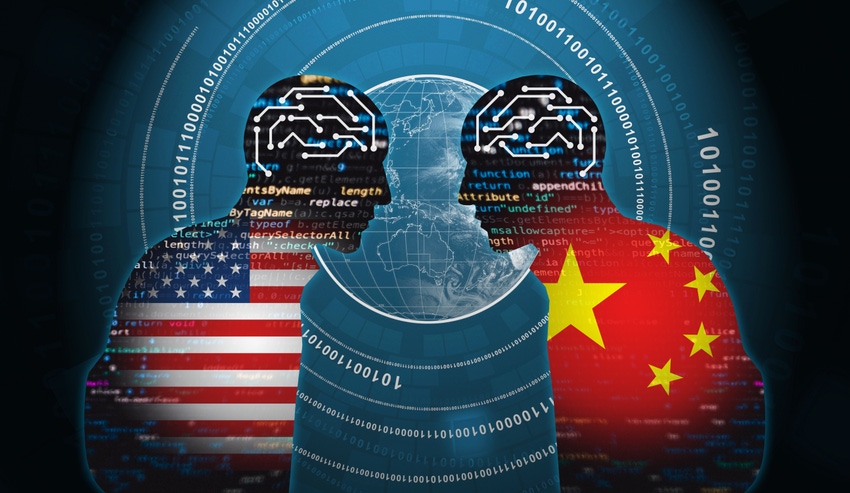FBI Director Wray Issues Dire Warning on China's Cybersecurity Threat
Chinese actors are ready and poised to do "devastating" damage to key US infrastructure services if needed, he said.
April 19, 2024

FBI Director Christopher Wray this week delivered what might be the starkest warning yet on the threat that China-backed hackers pose to US national and economic security.
In remarks at a Vanderbilt University-hosted summit on modern conflict and emerging threats, Wray described Chinese hackers as outnumbering FBI personnel by at least 50 to 1 and standing poised to "wreak havoc" on US critical infrastructure at a moment's notice.
Immediate and Imminent Threat
Stakeholders across private industry and government need to treat the threat as immediate and implement plans to fortify networks and respond to attacks now, the nation's leading law enforcement official said.
"The [People's Republic of China] has made it clear that it considers every sector that makes our society run as fair game in its bid to dominate on the world stage," Wray said. "Its plan is to land low blows against civilian infrastructure to try to induce panic and break America's will to resist."
Wray's comments build on repeated warnings in recent months from US officials — and the FBI itself — about a dangerous and systematic escalation in Chinese targeting of networks and systems belonging to organizations in critical infrastructure sectors. Wray and others have repeatedly described the intrusions as attempts by Chinese hackers to methodically pre-position themselves for attacks designed to disrupt telecommunications, energy, water, technology and other critical infrastructure services when needed.
China's cyberattackers are "giving the Chinese government the ability to wait for just the right moment to deal a devastating blow," Wray said. Beijing, he added, is building a capability to deter any US attempts to intervene in the event of a crisis between China and Taiwan.
Multifaceted Attacks
The ongoing attempts by Chinese hackers to establish and maintain a presence on critical infrastructure adds to the pressure that US organizations have had to deal with for more than a decade from China-backed cyber-espionage and cybercriminal groups. To support economic initiatives like Made in China 2025 and multiple separate five-year plans, Beijing has for years deployed cyber groups to systematically steal intellectual property and trade secrets from companies in key competitive sectors, Wray said.
Targets have included organizations in fields as diverse as biotech, aviation, artificial intelligence, agriculture, and healthcare. "The PRC is engaged in the largest and most sophisticated theft of intellectual property and expertise in the history of the world," Wray noted. "You could close your eyes and pull an industry or sector out of a hat and, chances are, Beijing has targeted it."
In recent months, the Volt Typhoon group has been one of the most visible faces of what the US regards as China's untrammeled aggression in cyberspace. The US Cybersecurity and Infrastructure Security Agency (CISA) and security vendors have, on multiple occasions this year, reported on the threat actor's intrusions into US critical infrastructure networks and operational technology environments with a view to gaining a presence on these networks and lying in wait for instructions to attack. Last year, The New York Times identified Volt Typhoon hitting military bases, prompting worried Biden administration officials to admit that the threat actor's malware was more endemic on US networks than previously thought.
"Scattershot" and "Indiscriminate" Attacks
Wray pointed to widespread attacks in 2021 that exploited zero-day vulnerabilities in Microsoft Exchange Server as one of the "most egregious examples" of China's "scattershot, indiscriminate, cyber campaigns," in recent memory. Those attacks involved China-backed Hafnium group deploying Web shells for remote access on thousands of corporate systems. The FBI — in an unprecedented move at the time — later obtained a court order to remotely remove those Web shells from thousands of infected systems before the threat actor could use them to inflict further damage.
In response to the growing threat, the FBI has mobilized its own field offices in the US and around the world to address the threat, Wray said. The agency is also working with US Cyber Command, the CIA, and foreign law enforcement agencies to disrupt Chinese hacking operations. The effort has included going after known hackers, malware developers, and the owners of support infrastructure like bulletproof hosting services and money launderers.
Private sector organizations can do their part by being more diligent about their cyber defense and response mechanisms and by sharing information that can prevent nascent threats from "metastasizing to other sectors" and businesses, Wray said. "We've seen the best outcomes in situations where a company made a habit of reaching out to their local FBI field office even before there was any indication of a problem, because that put everyone on the same page and contributed to the company's readiness."
About the Author(s)
You May Also Like
Key Findings from the State of AppSec Report 2024
May 7, 2024Is AI Identifying Threats to Your Network?
May 14, 2024Where and Why Threat Intelligence Makes Sense for Your Enterprise Security Strategy
May 15, 2024Safeguarding Political Campaigns: Defending Against Mass Phishing Attacks
May 16, 2024Why Effective Asset Management is Critical to Enterprise Cybersecurity
May 21, 2024
Black Hat USA - August 3-8 - Learn More
August 3, 2024Cybersecurity's Hottest New Technologies: What You Need To Know
March 21, 2024




